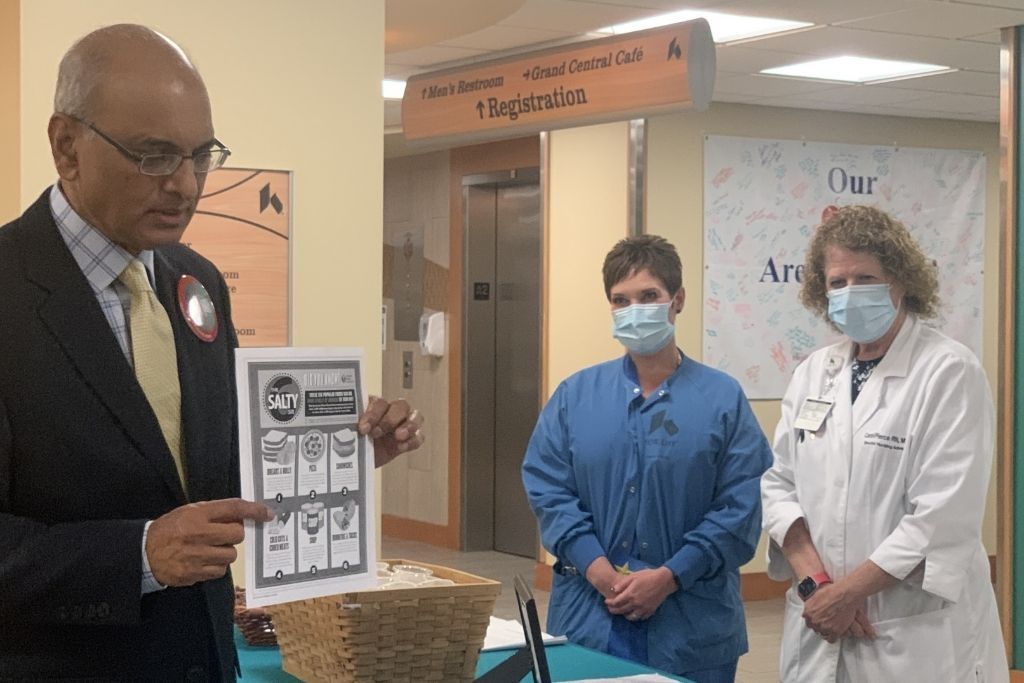Podiatry Care
Want to learn more about this at Kettering Health?
You might think everyone has a bottle of salt sitting in their kitchen. Or you’re used to throwing a dash onto your eggs. You may even toss salt over your shoulder to ward off bad luck.
But not so for Thoracic Surgeon Dr. Surender Neravetla. He lives a salt-free life. He doesn’t miss any benefits it may offer his taste buds. He notices only the health benefits.
You may not need to cut all salt from your diet, but there may be benefits to cutting some of your salt intake.
What’s wrong with salt?
Salt can contribute to a variety of health problems, including stroke, heart disease, and kidney failure. And salt is also one of the main risk factors behind high blood pressure (hypertension)—the most common health problem in the world. Chances are you know someone with this condition.
“Hypertension is the most common health problem in the world with more than a billion people affected—almost a hundred million Americans affected,” Dr. Neravetla says.
Limiting your salt intake is one way to reduce your risk of hypertension.
When you use a lot of salt, you build up excess sodium. This is excreted in urine. But in many people, sodium is retained, which also causes water retention. And extra fluid can increase blood pressure.
When blood vessels stiffen and narrow, the blood and oxygen flow to key organs decreases. The heart then pumps harder to push blood throughout the body, which further damages the heart and blood vessels.
High blood pressure is not curable, but it is avoidable.
Limit salt for a healthier diet
Dr. Neravetla encourages everyone to prioritize lowering their salt intake. He recommends finding ways to challenge your taste buds and adjusting to a healthier diet.
“Put your health first; taste will change,” Dr. Neravetla says.
If a healthy diet is not tasty enough for you, there are two choices:
- Give it more time.
- Be creative with seasoning.
How can you lower salt intake?
The easiest way to reduce your salt intake is by cooking with natural flavors and seasonings.
“You have to be creative. Use more herbs and spices like ginger, garlic, and cilantro. There are so many spices out there,” Dr. Neravetla says. “If a certain preparation is bland, add a splash of lime or lemon. Most people cannot tell the difference. Also use unsalted vinegar and incorporate it into your diet.”
Many natural foods have their own taste you can learn to love. Once you start enjoying the taste of natural foods, you won’t miss salt.
“Your taste will change. If someone gives you something salty, you won’t like it anyways,” Dr. Neravetla says. “Human beings are adaptable. Once you know what you are eating is not good for you, make some adjustments, and you will get used to it.”
Try to stay under 1500 mg of salt a day. The less you use, the better.
What salty foods should you avoid?
Beware of hidden salts.
Dr. Neravetla says 80% of excess salt you consume is from eating foods that already have salt added. If you are vigilant about not adding salt yourself, you cut 20%.
American Heart Association recommends you limit a group of foods they refer to as the salty 6.
These six popular foods contain more salt than you might expect:
- Breads and rolls
- Burritos and tacos
- Cold cuts and cured meats
- Pizza
- Sandwiches
- Soup
By reducing these foods, you do your due diligence to improve your health and avoid many dangers of salt.










